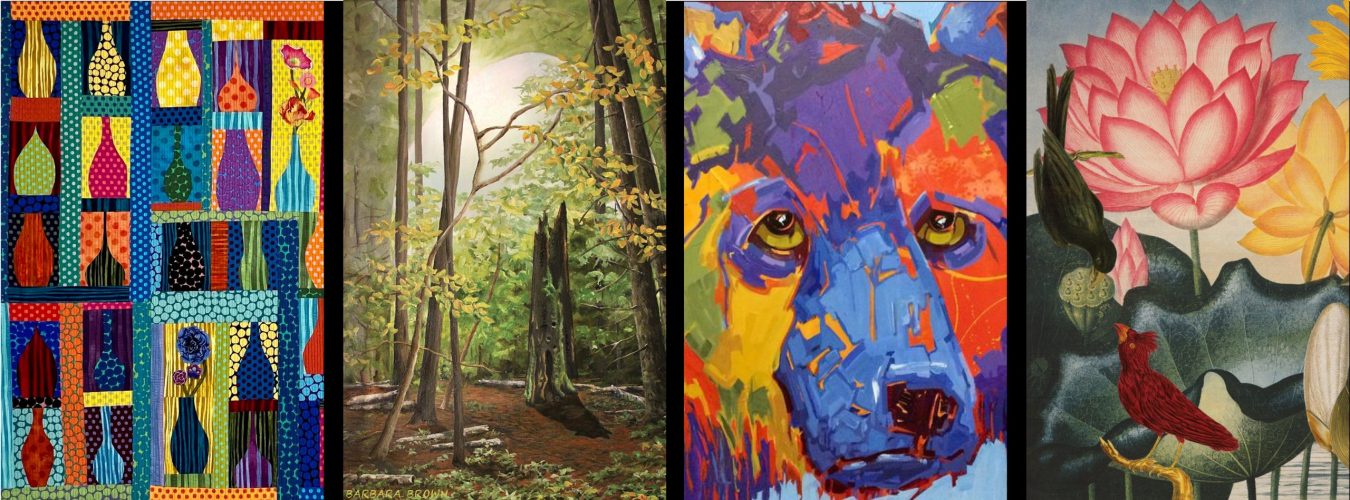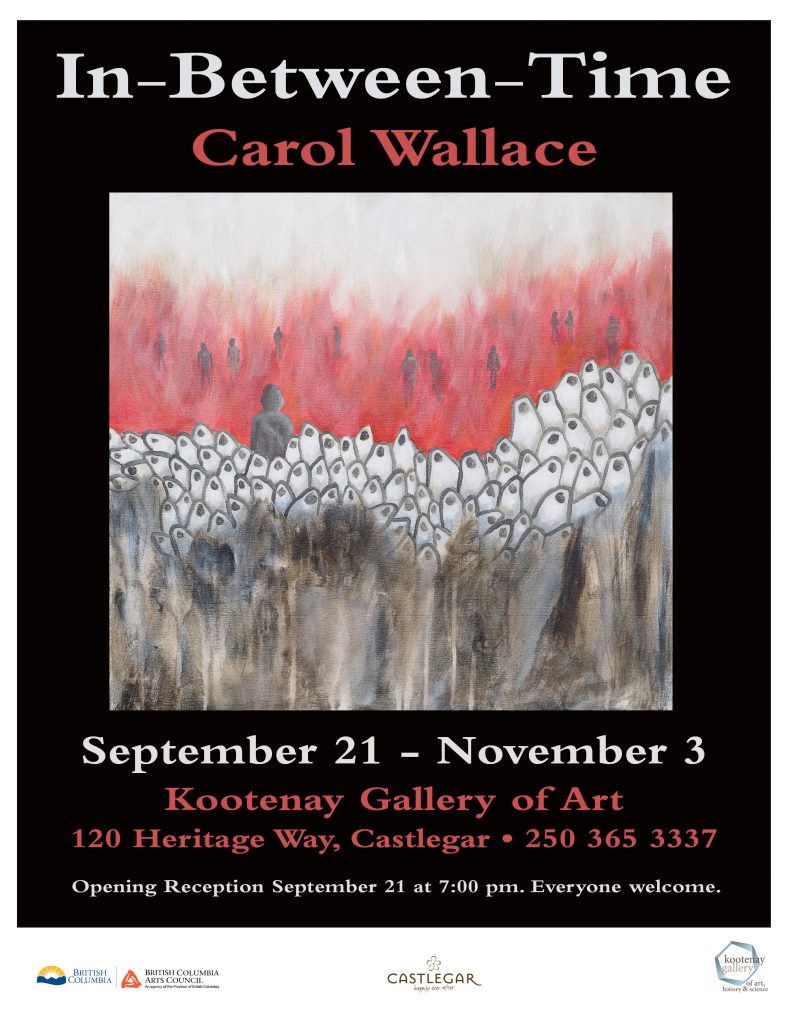In-Between-Time
Carol Wallace
September 21 – November 3, 2018
Imagery of fossil forms, some as old as 3 billion years, examines the vast concept of geologic time. Paintings include detail of delicate yet resilient early life forms, those that survived several extinctions. Our own insignificance is implied.
Artist Statement
In-Between-Time references Earth’s deep history. I am interested in early life forms, especially those that have survived extinction periods and their relationship to us currently living in an extinction period. Groups of people in the paintings are often juxtaposed with magnified fossil forms just below the surface, of which they are seemingly unaware.
While working as a field geologist, I felt a deep insignificance with respect to geologic time and the vast northern landscape that surrounded me. This always helped me put life in perspective; how small humans truly are. Yet this smallness is only with respect to time, our footprint has been massive. Humans have already altered the biosphere dramatically. Geologists have even proposed that we are currently living in a new geologic time period called the Anthropocene, where human activity is the dominant influence on climate and the environment.
My work presents this division between natural geologic processes in the subsurface and the anthros on the surface. A variety of delicate yet resilient fossil forms are referenced; Bryozoan, Syringopora, Stromatolites; all have their own unique story.
Bryozoans are tiny animals that live in colonies and have been on this planet for 450 million years. They resemble a community to me; individuals living together, working together. They appear to be invading the landscape in some paintings. Bryozoans survived several extinction periods.
Syringopora are colonial coral fossils. Their magnified shapes are vertical structures separated by delicate filaments. In the paintings, these conduits connect deep time to modern time. Syringopora went extinct about 245 million years ago at the end of the Permian, in one of the largest mass extinctions ever.
Stromatolites are communities of microbes that are considered to be the oldest fossils at 3.5 billion years. They lived in an oxygen depleted world, and through photosynthesis, helped to establish enough oxygen for life to truly flourish 540 million years ago, during the Cambrian explosion. In my mind stromatolites are the true survivors as some still exist today in saline shallow seas.
Earth has shown us that life flourishes, life is taken away, over and over again.
The humans in the paintings are portrayed as silhouettes on the surface and even within the stratigraphy, as just another layer. They are often in groups yet they seem separate from each other. It is as if they are waiting to see what comes next. They are uncertain, or maybe even clued out. In some paintings there are no humans present.
In the rock record millions of years from now there may be evidence of the degree of human impacts on the planet but my guess is it will be a thin layer indicative of our time here. Geologic processes will once again continue to be the dominant force influencing our biosphere. Earth will be fine.
Biography
Carol Wallace completed her Bachelor of Science degree with a geology major at the University of Calgary in the early 1990s. While working seasonally as a geologist, Carol moved to Nelson where she completed visual art classes with Kootenay School of the Arts and Oxygen Art Centre. She maintained her painting practice while working as a geologist, which included bedrock mapping for the Yukon Geological Survey and then starting her own company providing consulting services in geomorphology and terrain stability in the Columbia Basin. In 2008, Carol left her consulting business and now works full time in her studio in Nelson. Carol’s current work explores ideas and imagery informed by her former work as a geologist.

